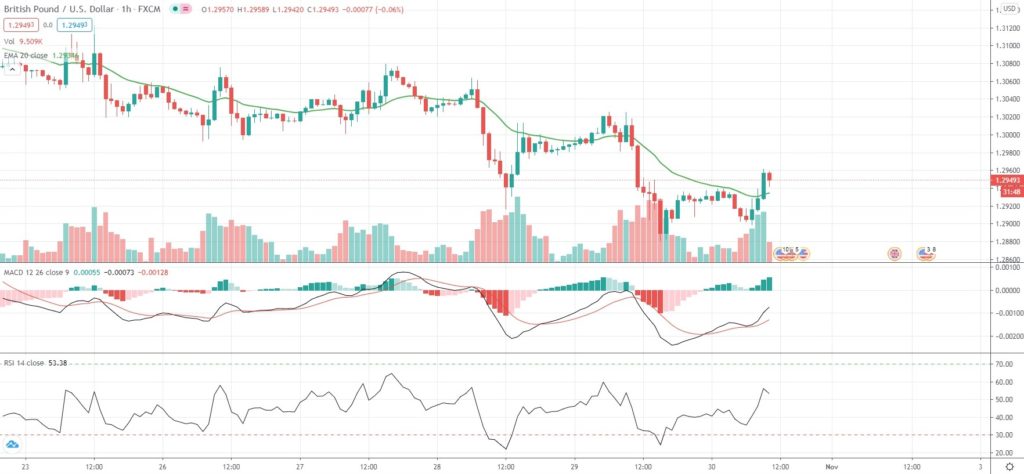Following two straight trading days of losses, GBP/USD edged up during mid-European trade on Friday and looked set for a monthly gain. Still, however, moves were limited due to lack of new headlines concerning Brexit trade deal talks.
EU-UK negotiations were resumed this week, with fisheries and rules governing state subsidies remaining the two critical matters discussed by sides.
“Those were the big problems before too, so it’s no big news,” Marshall Gittler, head of research at BDSwiss, said.
“European Council President Michel said they would probably assess the state of the talks next week with Brussels hoping to start the ratification process in mid-November. That should be positive for sterling, if indeed it happens.”
Meanwhile, on the macroeconomic front, a preliminary report showed on Thursday that US Gross Domestic Product had increased at an annualized rate of 33.1% during the third quarter, or at the sharpest pace since comparable records began in 1947.
A separate report stated that the number of Americans, who filed for unemployment assistance for the first time during the week ended on October 24th, eased to 751,000 from 791,000 in the preceding week.
However, uncertainty surrounding the US presidential election next week and virus spread concerns continued to affect market sentiment. New daily COVID-19 infections globally exceeded 500,000 for the first time, with the United States reporting over 91,000 new cases on Thursday – a new daily record. At the same time, Germany and France will re-impose coronavirus lockdowns next week.
As of 10:16 GMT on Friday GBP/USD was edging up 0.18% to trade at 1.2951, while moving within a daily range of 1.2899-1.2961. Yesterday it fell to 1.2881, or its weakest level since October 16th (1.2862). The major pair looked set for its fourth gain in five months, while being up 0.28% so far in October. It retreated 3.42% in September, which marked its worst performance since July 2019.
In terms of economic calendar, today market players will be paying attention to the monthly data on US personal spending, personal income and core PCE inflation due out at 12:30 GMT as well as to the monthly survey on business conditions in Chicago’s manufacturing sector at 13:45 GMT.
Bond Yield Spread
The spread between 2-year US and 2-year UK bond yields, which reflects the flow of funds in a short term, equaled 20.7 basis points (0.207%) as of 9:15 GMT on Friday, down from 22.0 basis points on October 29th.
Daily Pivot Levels (traditional method of calculation)
Central Pivot – 1.2945
R1 – 1.3009
R2 – 1.3090
R3 – 1.3153
R4 – 1.3217
S1 – 1.2864
S2 – 1.2800
S3 – 1.2719
S4 – 1.2638






